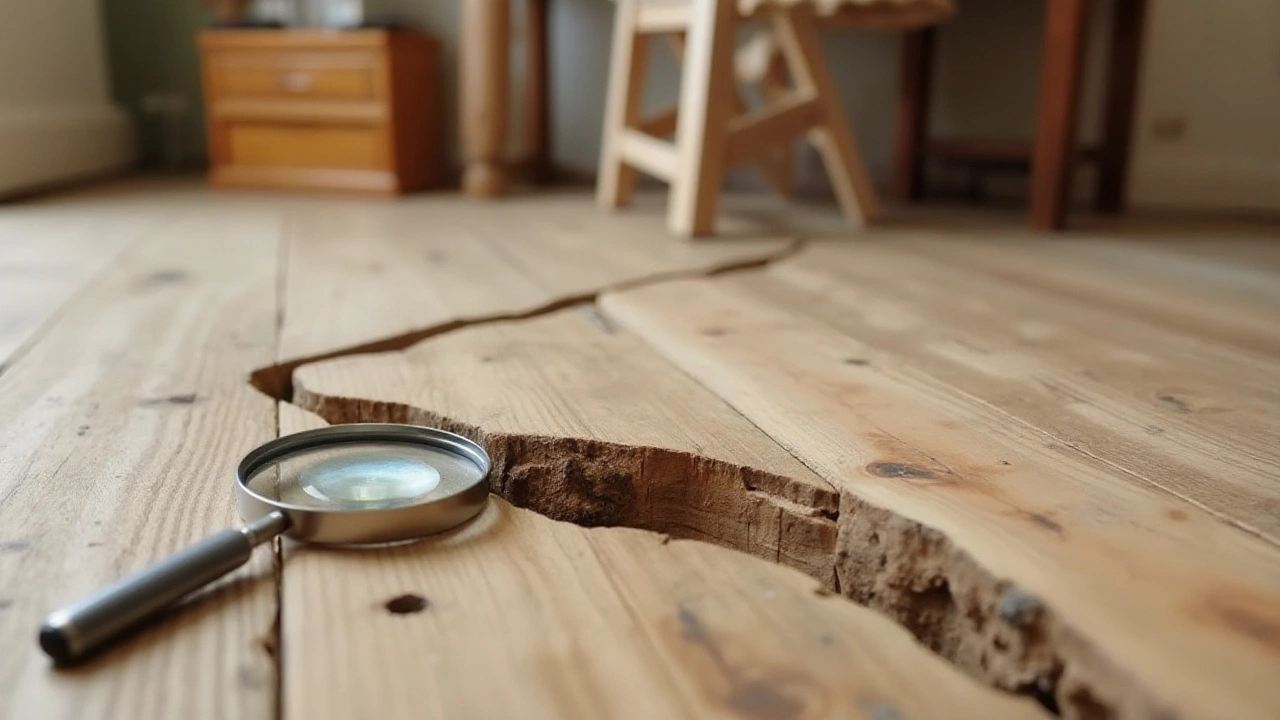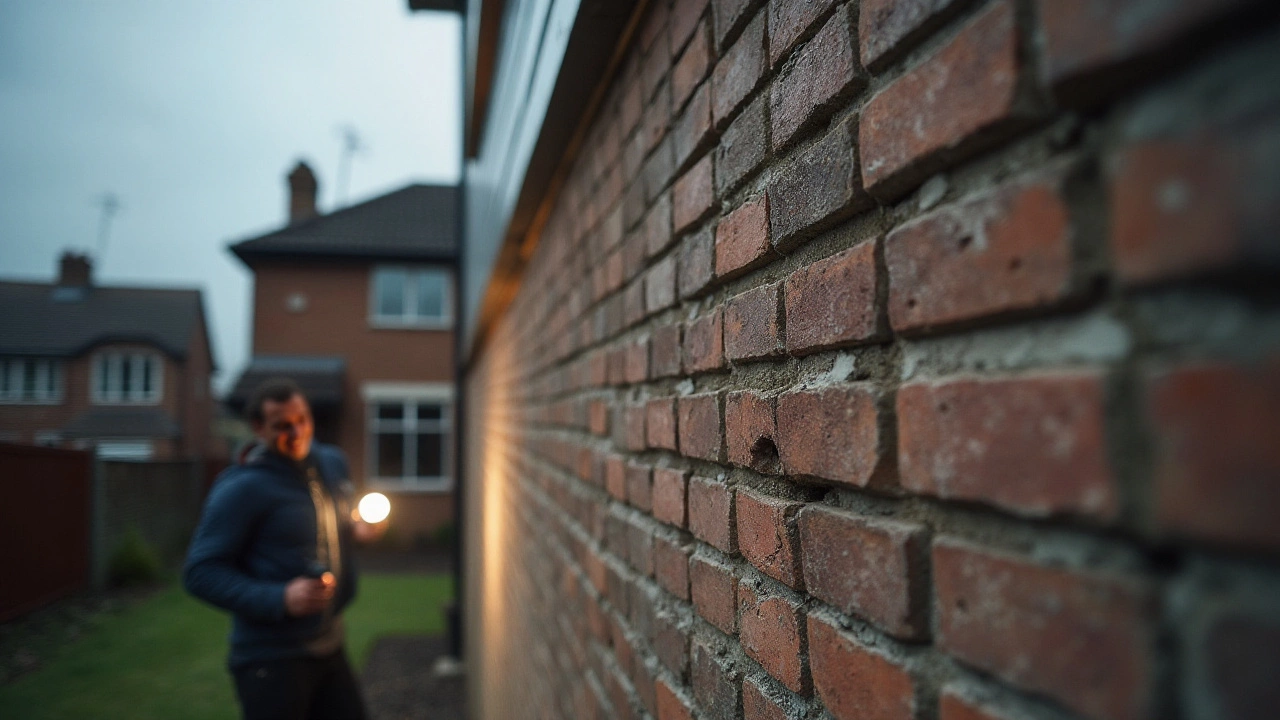Your home's foundation is its backbone, silently and steadfastly supporting your entire living space. But what happens when this crucial part of your house starts showing signs of stress? If you're wondering about potential foundation issues, it's important to recognize the early symptoms that may indicate a deeper problem.
Homes typically display some clear warning signs when foundation trouble is brewing. From cracks along walls to windows that refuse to budge, these annoyances can be indicators of more significant structural concerns. The earlier you spot these red flags, the quicker you can address them, potentially saving time and money on extensive repairs.
In the following sections, we'll walk through the common signs of foundation issues, explore the causes behind them, and offer practical advice for assessing the situation. Knowing what to look for can empower you to maintain your home's integrity and ensure it stands strong for years to come.
- Recognizing Warning Signs
- Common Causes of Foundation Issues
- Assessing the Severity
- DIY Checks and Quick Fixes
- When to Call a Professional
Recognizing Warning Signs
Understanding the health of your home's foundation starts with spotting the early symptoms that may indicate trouble. Some signs are obvious, like large cracks in walls or ceilings, while others can be subtle, making them easy to overlook. Being observant and knowing what to search for can go a long way in maintaining your home's structural integrity. Typical early indicators include visible fissures in the outside brickwork or internal drywall. Though not every crack signals a major issue, anything wider than a quarter-inch deserves further inspection. Watch out for stair-step cracks, as these often suggest that the foundation is shifting or settling unevenly.
Another major sign to keep an eye out for is doors and windows that are suddenly difficult to open or close. This often signals a shift in the foundation, leading to misalignment in your home’s structure. Such issues may also result in uneven floors, which can usually be noticed by walking around and feeling subtle changes in elevation from room to room. A small steel ball can be a simple tool to help identify uneven surfaces; if it rolls across your floor with ease, you might have a leveling issue on your hands.
Water intrusion also poses a significant threat to your foundation, as it may lead to expansion and contraction of the soil beneath. This can result in unwarranted pressure on basement walls. Look for signs of moisture, like mildew or persistent dampness in your basement or crawl space. It's especially important to ensure downspouts are directed away from your foundation, as improper drainage is a common culprit of foundation issues. As noted by the National Association of Home Builders, "Ensuring proper drainage and moisture management are key to preserving foundation integrity."
Finally, listen for strange noises, such as creaking and popping sounds. While some sounds are natural as houses settle, constant noise or sound in combination with the aforementioned issues could be indicative of foundation problems that require closer attention. Being proactive and attentive to these warning signs can save homeowners both money and stress by preventing minor issues from escalating into costly repairs.
Common Causes of Foundation Issues
Foundation problems can stem from a variety of sources, each potentially wreaking havoc on the structural integrity of your home. Perhaps the most significant culprit is poor soil conditions. Soil plays a crucial role in how well your home's foundation can support the structure above it. Clay-rich soil, for instance, is notorious for its ability to expand and contract drastically with moisture changes. When the soil expands due to water absorption, it can exert pressure on the foundation. As it contracts during dry spells, it can leave voids beneath the foundation, leading to settlement and cracks.
Another noteworthy cause of foundation issues is inadequate drainage. Without proper drainage systems in place, rainwater can collect around your home, increasing the soil pressure against the foundation walls. This persistent lateral force can eventually lead to bowing walls and, given enough time, actual failure. This is why addressing water drainage issues promptly is critical in preventing long-term damage. Broken or clogged gutters, improper grading, and poor landscaping can exacerbate the problem by allowing water to pool.
Sometimes, foundation troubles arise from faults in the initial construction. If the foundation is not constructed with the proper reinforcements or fails to meet structural specifications, it may be more prone to cracks and shifts. These construction errors could be due to oversight or constraints, such as budget or environmental factors. Even buildings designed meticulously can suffer if the construction doesn't account for regional seismic activity or other environmental challenges.
"Soil is one of the most variable aspects affecting the foundation of a home," explains Emily Casey, a renowned structural engineer. "Understanding its properties is essential when diagnosing foundation issues."
Trees, while beneficial for shade and curb appeal, are another potential hazard. Their roots can spread far and wide, and if positioned too close to the home, they can draw moisture from the soil under the foundation, worsening the issue in areas prone to drying. Over time, this uneven moisture distribution can cause certain areas of the foundation to sink.
Seismic activity is less about the frequent jolts and more about how over time, even minor tremors can destabilize previously sound foundations. In regions prone to earthquakes, it's vital to ensure your home complies with local building codes that are designed to withstand these natural events. Retrofitting older constructions can be a more cost-effective solution than rebuilding from the ground up.
Understanding these common causes offers a greater appreciation for what's at stake and underscores the importance of regular inspections. By identifying potential problems early on, you can mitigate risks and extend the lifespan of your home’s foundation, ensuring it stands firm amidst the tests of time and nature.

Assessing the Severity
When it comes to understanding the seriousness of foundation issues, it's crucial to recognize that not all signs carry the same weight of concern. Different problems demand different levels of attention, and knowing how to gauge the severity will equip you with the knowledge of whether a DIY fix might suffice or professional intervention is inevitable. Let's dive into some key aspects that help in assessing how serious your foundation problems might be.
If you notice small cracks, typically less than a quarter-inch wide, they might simply be signs of the house settling, which is quite common in many homes. However, any crack that's wider, extending along walls, floors, or ceilings, should catch your attention as these might indicate more significant structural problems. Horizontal cracks, in particular, could suggest serious lateral pressure against your foundation walls. Taking note of the crack patterns and direction is an essential first step in understanding their implications.
The functionality of doors and windows often serves as another great indicator of underlying foundation problems. If you find them being difficult to open or close, it could mean more than just an issue with humidity or age-related wear and tear. Misalignments could hint at shifts in the foundation. A responsible check involves observing how frames align; slanting frames are a worrisome sign of foundation movement. Regularly checking these areas provides an early warning system to spot structural damage.
For those looking to dig deeper, assessing floor slants is another practical approach. Often, foundation issues manifest in uneven floors, and while slight imperfections are typical over time, pronounced slopes suggest something more severe. A simple test involves using a ball or a marble—place it on the floor and see if it rolls one way significantly. If it does, especially in combination with other symptoms, it's time to consider professional evaluation.
Additionally, be attentive to water drainage features around your property. Poor drainage can exacerbate foundation problems by introducing excess moisture. Standing water near the base of your home could undermine structural integrity over time. If you notice such a pattern, addressing drainage issues quickly can prevent further damage. A properly installed gutter system, along with grading the landscape to direct water away from the house, becomes a preventive measure crucial in foundation maintenance.
"The first sign of foundation trouble is often noticed by simply how uneven your floors are," says Dave Jones, a well-regarded structural engineer. "Rather than ignoring these shifts, acting early can make all the difference in maintaining your property."
In some cases, employing simple tools like a level can help amateur inspectors note substantial deviations across various parts of your house. However, for a thorough evaluation, calling a specialist might be the best move. Professionals utilize advanced tools to measure the depth and extent of any foundational shifts, ensuring that any repair strategies recommended are both effective and appropriate to the scale of the issue.
DIY Checks and Quick Fixes
When it comes to identifying and addressing potential foundation issues in your home, there are several DIY checks you can perform before calling in the professionals. While these tasks won't solve major structural problems, they can give you valuable insights and help you decide the urgency of professional intervention. Start by taking a close look at the interior and exterior of your house. Notice any cracks? Are they hairline fractures, or more extensive gaps? Cracks in drywall or brickwork, particularly those wider than a quarter-inch, might indicate significant movement in the structure. Keep an eye on their progression over a few weeks to assess if they're stable or worsening.
Doors that stick or fail to latch properly can also be symptoms of shifting foundations. Make it a point to regularly test your doors and windows; if they once opened smoothly but now resist, it's worth taking note. This resistance can be due to changes in the frame's alignment brought on by structural shifts. Use a level to check if these frames are still square, as sagging or tilting might point to a deeper foundational problem.
With foundational shifts, water management takes on an important role. Go outside during a rainstorm and monitor the areas around your foundation. Water pooling near the base can lead to serious issues over time. Ensure that gutters and downspouts are channeling water at least five feet away from the house. Adding some soil to low spots where water accumulates can be a quick and effective fix to help maintain the stability of your foundation over the long haul.
"Routine inspection and maintenance are paramount in preventing severe home foundation problems," noted John Smith, a seasoned structural engineer, during a recent conference on home integrity. "Proactive homeowners can save thousands by spotting minor issues before they escalate."
Checking the foundation from inside the basement or crawl space is equally beneficial. Look for any unusual dampness or water stains, which might suggest leaks. You'll also want to watch for insects like termites, as they can cause damage that's expensive to fix if left unchecked. There's a simple diagnostic trick: push a screwdriver into the wood; if it sinks easily, rot might be present.
If you plan to attempt some quick fixes, consider filling minor foundation splits with epoxy or masonry patches available at home improvement stores. These materials can prevent water entry and further erosion but remember, they're temporary solutions. They buy you time while you consult a specialist for permanent repairs. You'll also want to check on any vegetation near your home. Roots from large trees could be disrupting the soil under the foundation, so trimming or relocating shrubs and trees might be necessary to protect the structural integrity.

When to Call a Professional
Not all foundation issues are created equal, and sometimes it's hard to discern when it's truly time to bring in the experts. However, certain signs are clear indicators that professional intervention is needed. Cracks wider than a quarter-inch, particularly those that run horizontally or in a stair-step pattern, often warrant examination by a structural engineer. These types of cracks can indicate serious shifts in the foundation that might affect the entire structure down the road.
If you've noticed your floors sloping or becoming uneven underfoot, this can signal that your foundation requires more than just cursory fixes. Sloping floors may indicate that foundational supports are compromised, and while it may seem minor at first, it can lead to significant structural issues. When your home repair extends to such foundational shifts, it's time to call in professionals who can assess the scope of the damage. Such assessments often require specialized tools and expertise beyond the reach of most homeowners.
Windows and doors sticking or not closing properly is another significant sign. While humidity changes and paint can cause temporary sticking, persistent issues can point to foundation shifts. This could affect the alignment of these frames, suggesting a larger systemic problem. Enlisting a professional sooner rather than later can save you from future inconvenience and potential damage.
A common rule of thumb from industry veterans states, "If you can slide a dime into the crack, call an expert." This quote helps put into perspective the size and severity threshold after which professional help becomes imperative.
There’s a fair chance you’ve seen minor issues arise in your home. Minor cracks can be common and not always a cause for concern. However, if water intrusion is evident, with damp spots forming on basement floors or walls, the problem is escalating. Dampness could imply that water is seeping in through cracks or gaps, possibly undermining the soil that supports your foundation. Professional structural damage assessment may identify precise water management techniques or sealing options necessary for long-term maintenance.
Calling a professional isn't just about addressing issues as they appear; it's also about leveraging preventive measures. Routine inspections by qualified experts can help avert costly repairs down the line. They can detect subtle signs of strain that may not yet be visible to the untrained eye. With the help of a professional, you can adopt enhancements that bolster your home's foundation and mitigate future risks. Investing in expert advice is one of the best decisions for ensuring stability and value in your property maintenance. Consider reaching out for a consultation if several of these indicators appear concurrently.
